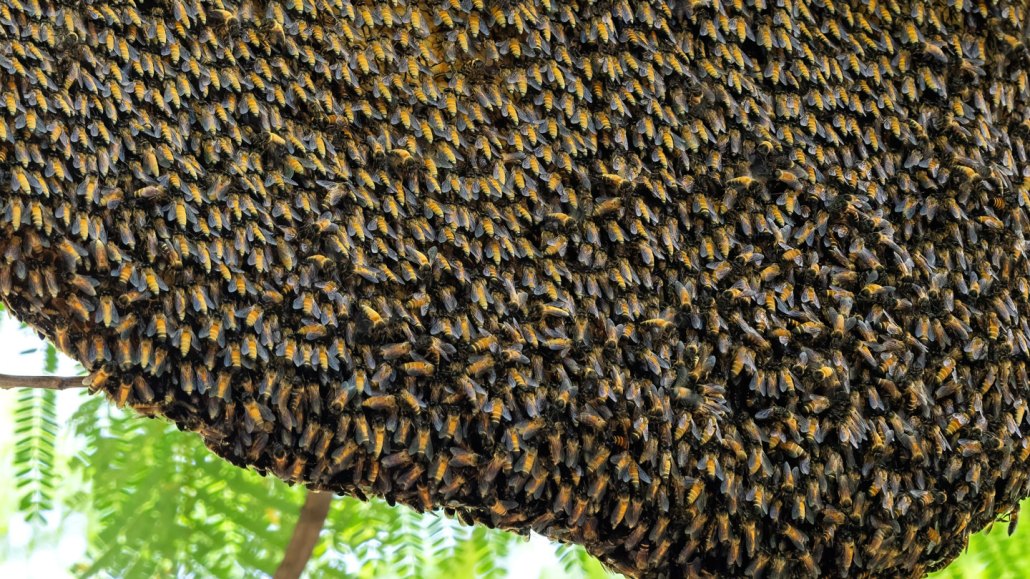
Giant honeybees form open nests uncovered by other materials and “shimmer” when some predators come near. A study is revealing new details about what sets the bees in motion.
Backiris/iStock / Getty Images Plus
Giant honeybees send waves rippling across their open nests by flipping their abdomens upward in coordination, a sight that approaching predators seem to shy away from. A new study is revealing details about what triggers the behavior, known as shimmering.
That shimmering is strongest when the bees are shown a dark object that moves against a light background under bright ambient light, researchers report in the September Journal of Experimental Biology. The experimental setup simulates animals such as hornets, one of the bees’ main predators, flying against the bright sky, and shows what visual cues set off the behavior, the researchers say.
The behavior “is intriguing as this is possibly one way in which a species of animal communicates with another to warn that they are capable of defending themselves,” says Kavitha Kannan, a neurobiologist at the University of Konstanz in Germany who was not involved in the study.
Giant honeybees, including Apis dorsata, typically form open nests uncovered by other materials in areas like tree branches and window ledges. In the new study, the researchers worked with two A. dorsata nests in roof rafters. Standing near the hives, behavioral ecologist Sajesh Vijayan of the Indian Institute of Science Education and Research Thiruvananthapuram moved circular cardboard pieces of different sizes in shades of gray and black against either a gray or a black background. The bees shimmered when a black object moved against the gray backdrop, but not when the contrast was flipped.
That’s probably because the black-on-gray setup “resembles a natural predator or a natural condition,” says Sajesh, who goes by his first name, as is common in many parts of southern India. “These are open-nesting colonies, so they are always exposed to a bright sky.”
The team observed little shimmering during the dim twilight periods of dawn and dusk. Since shimmering is a response meant to be perceived by a predator or other unwelcome visitor, such as a bee from another colony, the researchers think that other defensive behaviors might be at play during dim conditions.
“We also think that shimmering is a specialized response towards hornets because it has not really been reported in cases of birds attacking or birds flying past these colonies,” Sajesh says. Birds, instead, “elicit a mass stinging response.” That could be because approaching birds loom comparatively large in the bees’ visual field, and at that point, the bees’ attitude may be “let’s not take any more chances, just sting,” Sajesh says.
In both hives, shimmering completely vanished when the bees were presented with the smallest objects, in this case a circle four centimeters in diameter. The result suggests that there is a minimum size threshold that triggers the ripples.
Shimmering strength did not wane even when the bees were exposed to the artificial setup repeatedly, perhaps because it’s advantageous to stay vigilant against predators like hornets that make persistent attacks.
How exactly the bees are perceiving the objects in the study is not yet known. “They could be actually seeing this object moving, or they could just be responding to a reduction in their visual field,” Sajesh says.
The researchers plan to explore that question further. They are also designing experiments with LED screens to tweak the background colors and patterns and object shapes to figure out what types of shapes and even motions might matter to the bees.






